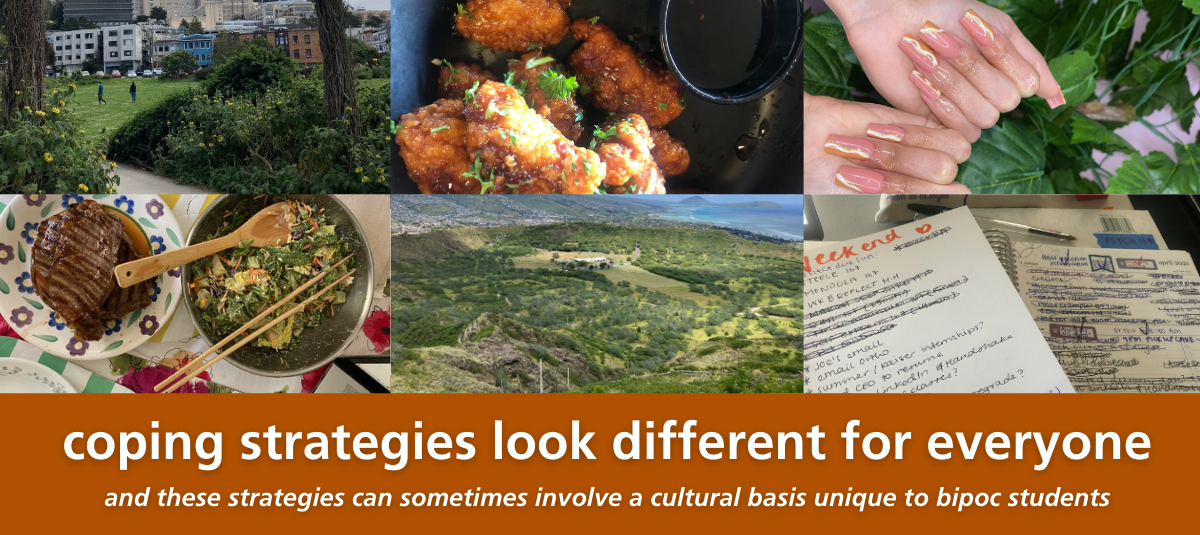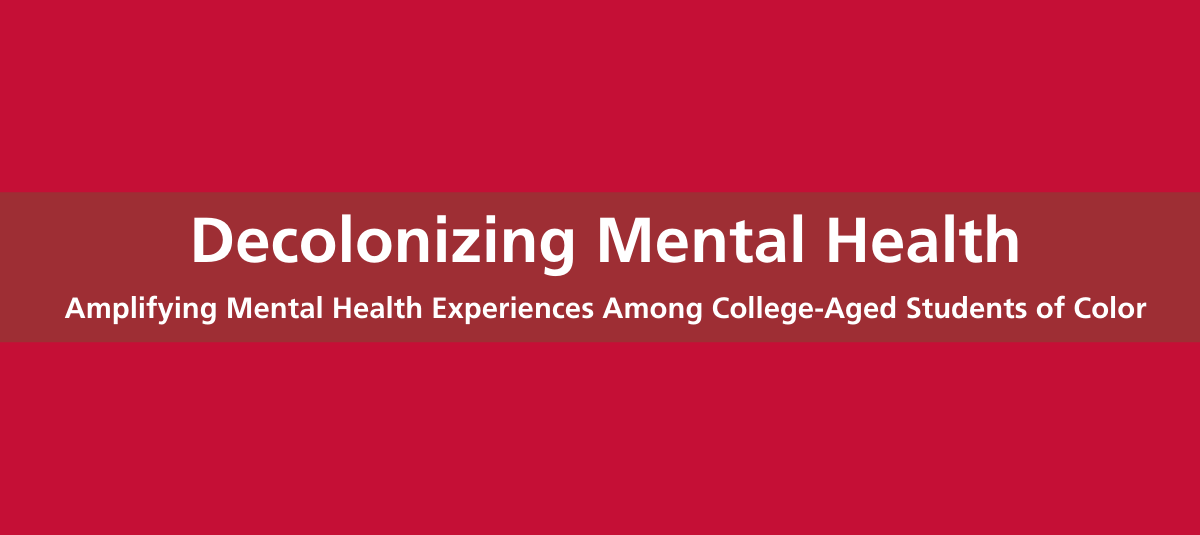As a young woman who comes from a Hispanic family and has seen first-hand how much culture and identity can impact access to mental health education and resources, I knew that when I was given the opportunity to do mental health research as an Active Minds Emerging Scholar I was going to take it. Stemming from my own personal struggle with mental health while I was in college, I’ve always wanted to make a difference for college-aged students of color who are dealing with mental health issues. Specifically, I wanted to seek the answers to three questions that have been in the back of my mind for years:
- How do BIPOC college students view and experience mental health challenges?
- How do various institutions, including their school, support (or not support) their mental health?
- How do BIPOC college students cope with their mental health challenges?
To gain perspective on the answers young adults may have to these questions, I employed two research methods: photovoice and individual interviews. Photovoice entails using pictures to convey feelings and experiences, while individual interviews allowed me to go more in-depth with participants who were willing.
The basis of my project came from a desire to allow participants to share their own voices and stories, rather than using Eurocentric definitions of mental health and coping strategies. Therefore, there were a few overarching themes that arose out of both methods of research I utilized that I feel could be useful in better supporting college students of color, directly from the students themselves:
Cultural and Societal Views
One quote from an individual interview that I felt best encapsulated the experience many young people of color experience when dealing with mental health issues is this: “I feel like in my household, or in Latinx culture, [mental health] is just not really talked about. At least for my family, it’s like ‘Oh you just gotta brush it off, keep going, you’re fine.’ So I don’t think I learned much about it there.” Unfortunately, this mentality of suppressing feelings and hiding mental health challenges out of shame or fear is far too common. While my generation has made great strides in destigmatizing mental health issues, there’s still a long way to go. Young adults, particularly young people of color, still feel the stigma of mental health issues and may suffer disproportionately, because of a lack of resources, support, or a combination of factors.
Institutional Impact
When discussing the institutional impact colleges and universities can have on mental health, there were two main schools of thought that prevailed for students of color specifically. For some, colleges and universities are exclusionary places, where it can feel difficult to speak up both in the classroom and privately with professors. Some students also indicated more specific challenges, including difficulty navigating resources at school. On the other hand, some students noted professors being more understanding about mental health issues than other teachers had been in the past. One student said, “Most of [my professors] are very open and honest about how they’re doing mentally too, so that encourages the students to be able to open up to them…”. While this is an encouraging trend, the discrepancy between different students’ experiences shows that there is still room for improvement at colleges and universities.
Coping Strategies

Finally, the utilization of coping strategies was a major theme for these young adults as they navigate their mental health. Throughout my project, I talked to multiple participants about their personal coping strategies, and their answers were as individualized as one would expect. From hiking, to journaling, to meals with family, to even just showering, it rang true that everyone finds different ways to cope that work for them. Therefore, if we’re looking for ways to support mental health for young people of color, the first step is to know that everyone’s approach to coping with mental health challenges may look different, and institutions should do their best to provide a variety of self-care strategies and tools.
Overall, working on this project demonstrated how BIPOC college mental health needs greater attention, with challenges coming from a lack of support, institutional barriers, and cultural and societal views. As we move forward, I hope to see more research done in this field, so that we can ensure mental health advocacy does not only exist but is equitable and accessible.




